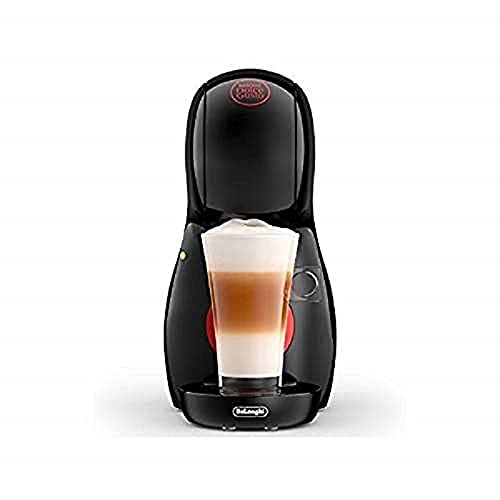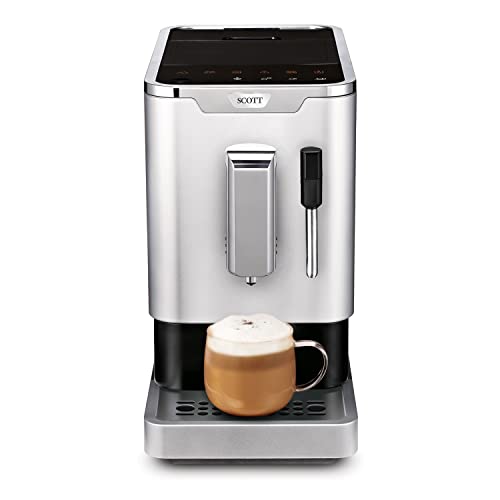Why Machine Coffee Is Still Relevant In 2023
페이지 정보

본문
 What Goes On Inside a Machine Coffee Maker?
What Goes On Inside a Machine Coffee Maker? coffee machine pro machines make it simple to enjoy a cup of coffee at home. The most popular models come with a programmable timer and even a built-in grinder.
coffee machine pro machines make it simple to enjoy a cup of coffee at home. The most popular models come with a programmable timer and even a built-in grinder.Sensors control the heating element which circles around a warming plate once you switch on the power. It also has an aluminum water tube that passes through it.
Cold-Water Tube
A machine coffeemaker takes the water that you pour in and transforms it into coffee. It does this by boiling the water, then passing it through a process that generates high pressure to force it through a capsule of ground or soluble product. These machines use up to 15 bars of pressure, as opposed to coffee percolators that only use one bar of pressure.
This reservoir looks like an empty bucket in the bottom of the machine and is where the water is stored to make your drink. The reservoir has a hole at the bottom. It connects on one side to the tube inside the heating element and on the other hand, to an white tube with an insulation that runs from the bottom of the machine to the faucet.
When you switch on the machine the water from the reservoir is transferred to the heating chamber. The thermostat then instructs the machine to get heated. As the water warms it expands. This causes a screen to move beneath a portafilter, which is filled with espresso and was tamped. This pressure causes the screen be able to penetrate the filter, which allows the espresso to flow into your mug.
The espresso that is brewed from your machine is a rich, flavorful beverage that can come with different levels of acidity depending on the kind of beans you select. If you find your espresso to be unpleasant, you can try using a different filter or more coarsely ground beans. If the issue persists, you should call an authorized technician to conduct a de-liming process. The most frequent cause of this issue is lime scale.
Hot-Water Tube
The white tube that has insulation at the bottom of your machine is the hot-water tubing. It carries hot water from the heating unit to the faucet on the top of the automatic coffee machines maker. The water then saturates your coffee grounds, bringing the flavors into the cup of coffee you are waiting for.
Certain coffee makers come with an option to keep the water warm so that it's ready for you when you get up. This is done making use of a heater that generates a small amount steam. The steam is then directed towards the spout, which keeps your coffee warm until you're able to pour it.
Although it might appear as though a coffee maker is complicated and expensive, the majority of models are quite simple to operate and have very few moving parts. A good cleaning and regular use will keep your machine in excellent condition for years to come.
Many coffee makers with a built-in grinder allow you to add ground coffee from a container, then lock the portafilter to its place, then flip the switch to start the brewing process. When the switch is turned on the pump will begin to pressurize the water in the heating chamber until it's at about 220 psi of pressure.
One of the biggest issues when making coffee is the need to refill the reservoir frequently. Some manufacturers have created coffee machines that connect directly to the household water line. This lets you skip the reservoir. If you're a DIYer there are kits that can transform any machine into an espresso maker that has a water line connection. The process is a bit more complex and requires drilling holes in your machine to accommodate the adapter. This could weaken the coffee maker's construction and cause cracks around the drilled areas. For the best results, you should purchase a coffee maker designed specifically to accommodate an immediate line of water.
Resistive Heat Element
The heater is a piece of metal that has a specific kind of electrical resistance. It resists the flow of electricity without stopping it completely, and some energy is transformed into heat. This is what causes the heating of the water inside the boiler of your coffee maker.
The heating element is located on the left side of the base of your machine, and it resembles a light bulb filament or the element in your electric toaster. It is made up of an aluminum extrusion that is divided into two sections, with a tube to allow water to flow, and a resistive element. (Watch video here). The resistance in this coiled wire is what makes it heat up when it gets power.
When you turn on your coffee maker the element begins heating the aluminum water tube until it starts to boil. Then the bubbles float up through the white tube and are sprayed onto your coffee grounds by the shower head. This water spray picks up the essential oils of the coffee beans as it falls down and includes caffeine.
If you're having trouble with your coffee maker and the hot water isn't coming out, it's probably due to a faulty pressure switch or thermostat for the heating element. You can test both of these by using a multi-meter to perform the continuity test. Connect one pole to the electrical connection, and the other to the flange body, and it should read a number below 1. If there is no reading then it is a sign that the thermostat or switch needs to be replaced.
The other major component of your coffee maker that can be a source of issues is the water pump or your reservoir. It could get blocked with lime and that is the reason you should run an aqueous mixture of water and descaling solution through it.
Warming Plate
A warming plate is a heated metal surface which keeps the coffee warm after it has been brewed. This feature of the coffee machines for home maker is extremely popular with those who enjoy coffee Machine Automatic at restaurants and is an excellent feature for any kitchen at home. However the warming plate could rust quickly and sour the flavor of the coffee, making it important to keep it clean. The best home coffee maker method of cleaning the heating plate of a coffee maker is to use a mix of oxalic acid and water.
Oxalic acid is a potent cleaning agent that can be used to eliminate the rust from sinks, pipes and gas stove burners and many other household items. You can buy this product in most hardware stores. It is a great method to clean the rusty warming plates that are in your coffee makers. You should always be careful when using this product because it could cause burns and other injuries if not handled properly.
If you are cleaning the heating plate, first make sure that the coffee maker is unplugged. This will help prevent any damage caused by the heat generated by cleaning products. It is also recommended to wear gloves made of rubber as the oxalic acids can be extremely rough on your skin.
Next then, apply white vinegar to the rusty part of the coffee maker's heating plate. It will react chemically with baking soda and dissolve the rust. Then apply brushes or rags to scrub the area until it's clean. If your coffee maker is damaged, you may have to repeat the process a few times to get it completely clean. Be sure to wait until the oxalic acids have totally evaporated before plugging your coffee maker in again.
Aluminum Water Tube
The machine will begin making coffee as soon as you switch it on. It may seem simple enough, but there is a lot going on in there to turn a few scoops of grounds and a few cups of water into a steaming hot drink.
The cold water goes in through an opening in the reservoir's bottom and then into the aluminum tube underneath the resistive heating element. The aluminum tube starts to heat up and when it is at its boiling point, bubbles begin to form that push the water up the white tube in the center of your coffee machines home maker.
The hot water flows out from the top of the tube into an elongated disc, also called the shower head. (Or basket in some machines). Here the hot water falls over the ground coffee, picking up its oil essence as it does so.
Then, the water flows through the coffee, then back up through the filter into your pot. The pump's oscillating pressure is the reason for this. The shearing force exerted by the bubble's expanding and contracting boundaries removes the ground coffee particles from the water, resulting in an espresso-like drink that is strong and smoky.
It is important to remember that your machine is dependent on a number of different components, and all of them are interconnected. If you hear strange noises or feel vibrations, it could be a loose component. Parts that are loose could cause noise and weaken connections, which could result in further problems.
- 이전글5 Reasons To Consider Being An Online Asbestos Attorney And 5 Reasons Not To 25.01.11
- 다음글Don't Make This Mistake You're Using Your Coffee Machine Tassimo 25.01.11
댓글목록
등록된 댓글이 없습니다.

